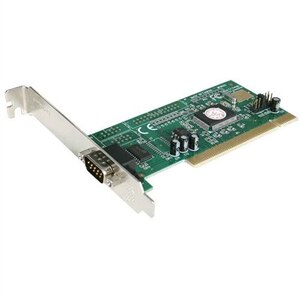PCIe/UPCI/PCI Serial Cards. Moxa's dedication to being a trusted provider of serial connectivity is demonstrated by our long-term commitment to serial products and service availability. Our PCI Express, Universal PCI, and PCI serial boards are built for industrial applications, and include models that can operate reliably in a wide temperature. The PCI serial card can only be installed in desktop computers. The PCMCIA RS232port card can be installed in laptops but also in desktops with a PCMCIA slot. Drivers for serial port cards. Since a PCI serial card is installed directly into the PCI.
This page contains information on how you can identify an unknown PCI card. If you are a Microsoft Windows user and have an 'Unknown device' or 'Unknown PCI device' in Device Manager, follow the steps below.
Microsoft Windows users
- The PCIe serial card delivers high-performance serial communication, with support for data transfer rates of up to 460Kbps. The serial card provides CPU load decrease which helps.
- PCI: Platform: PCI Express (PCIe) PCI Slot: PCI Express x1, x2, x4, x8, x12, x16 lane compatible: Low Profile PCI Option: Yes - Low profile bracket included: Interfaces: Serial Ports: 4 or 8 RS-232: Serial Connector: DB-25, DB-9 4' fan-out cables; DB-9, RJ-45 connector boxes 6' captive cable: Throughput: Up to 921.6 Kbps: Features: Operating.
Microsoft Windows users can look at the registry to determine the manufacturer or model of a PCI device installed in their computer. To do this, follow the steps below. If you do not want to edit the registry and want to use a different program, skip to the next section.
Through the System Information


- Open the Windows System Information (msinfo32) tool.
- Click Components to expand the available components on the computer.
- Click Problem Devices and locate the PnP ID for the device you want to identify.
- As shown in the example above, you have lots of useful information to identify the card. In this example, the VEN aka vendor is 5333. Searching for this vendor on the PCI database shows that this particular PCI device is an 'S3 Graphics Co. product.' You can find a link to the PCI database on our motherboard links.
Through the Windows registry and early versions of Windows
- Open the registry by clicking Start and in the run line type regedit.
- In the Registry Editor, access the registry key below.
Windows 2000 users
HKEY_LOCAL_MACHINE
SYSTEM
ControlSet0001
Enum
Windows 95, 98, and ME users
HKEY_LOCAL_MACHINE
Enum
PCI
- In the key above, see folders similar to the example below.
- As shown in the example above, you have lots of useful information to identify the card. In this example, the VEN aka vendor is 5333. Searching for this vendor in the PCI database shows that this particular PCI device is an 'S3 Graphics Co. product.' You can find a link to the PCI database on our motherboard links.
Other software solutions
If you visit the PCI database page, it contains several third-party solutions and links to software to identify a PCI device in your computer. You can find a link to the PCI database on our motherboard links page.
Serial Card Port

Hardware solution
Pci Card Serial Port
If you cannot determine the PCI card using software, the next best solution is to examine the card. It is common that the card has the manufacturer and model number printed on the card. If no model or manufacturer is listed, look for another identification on the card, such as an FCC identification number. For additional information about FCC numbers, see our FCC definition page.
Additional information
Serial Pci Card Driver Windows 7
- See the PCI definition for further information on PCI and related links.
